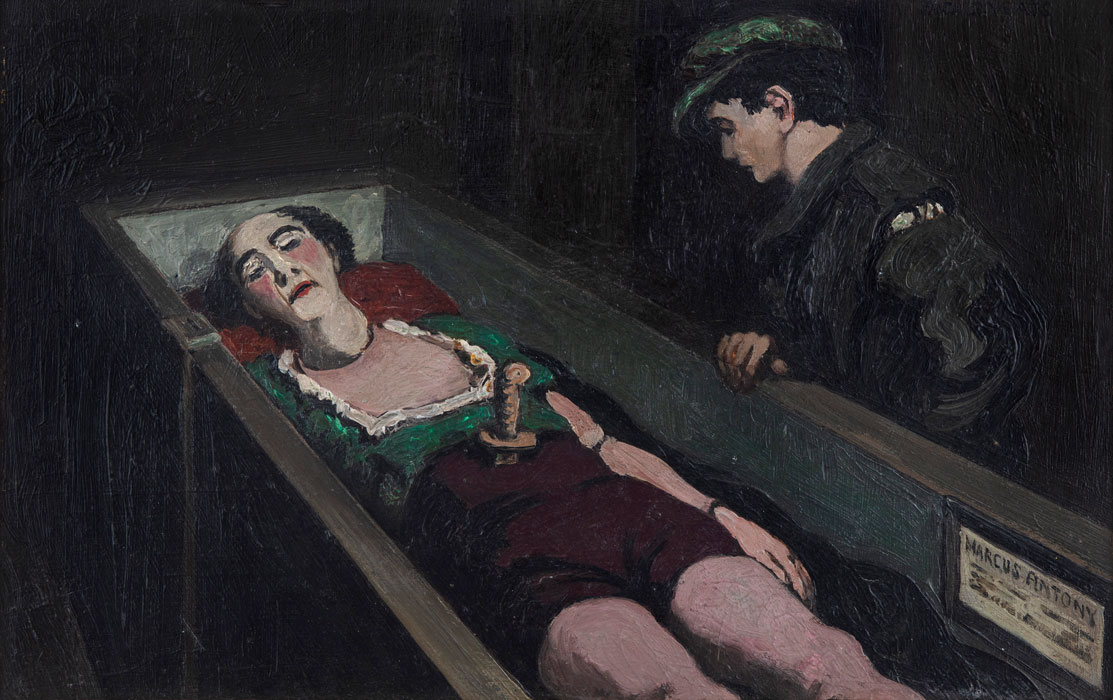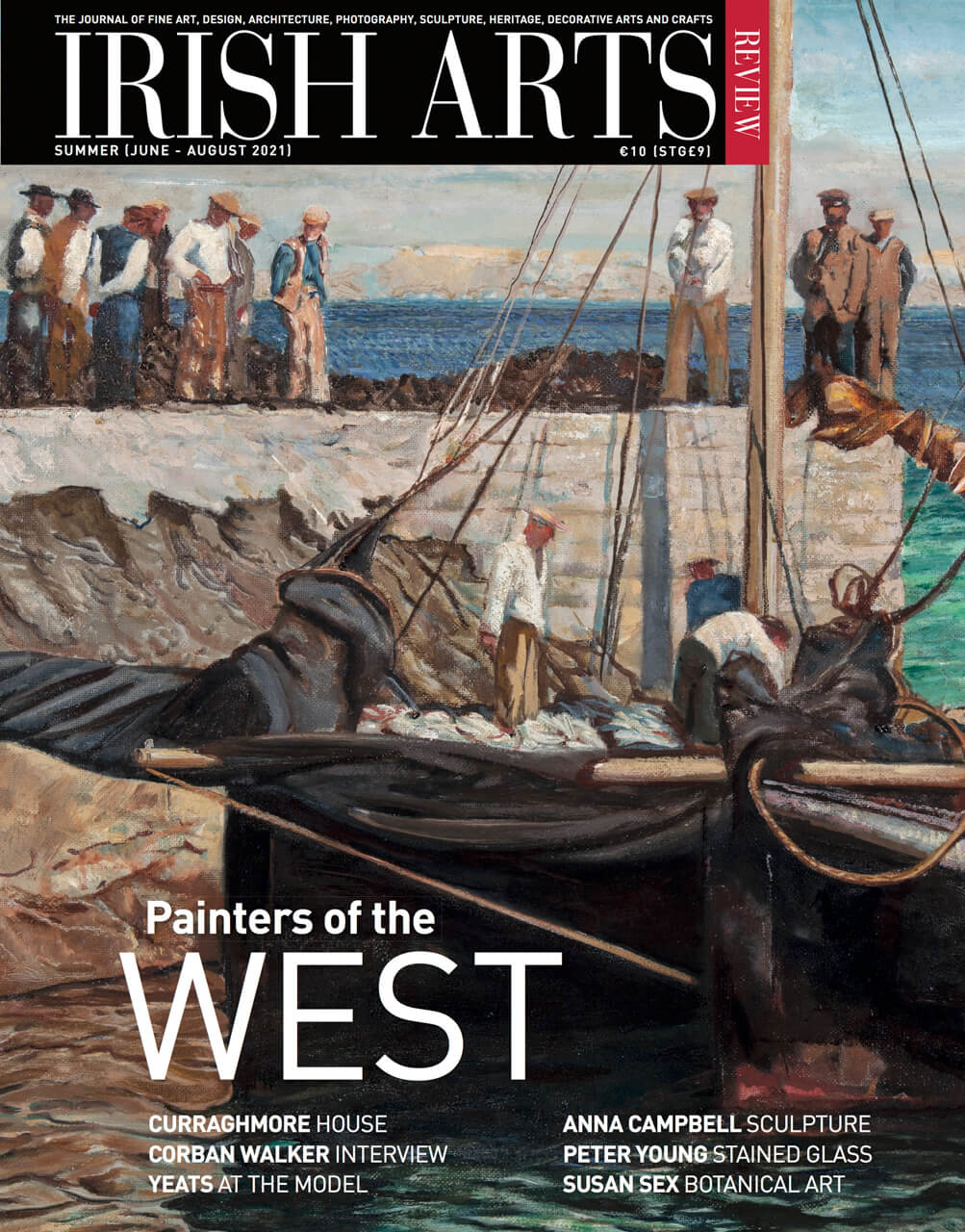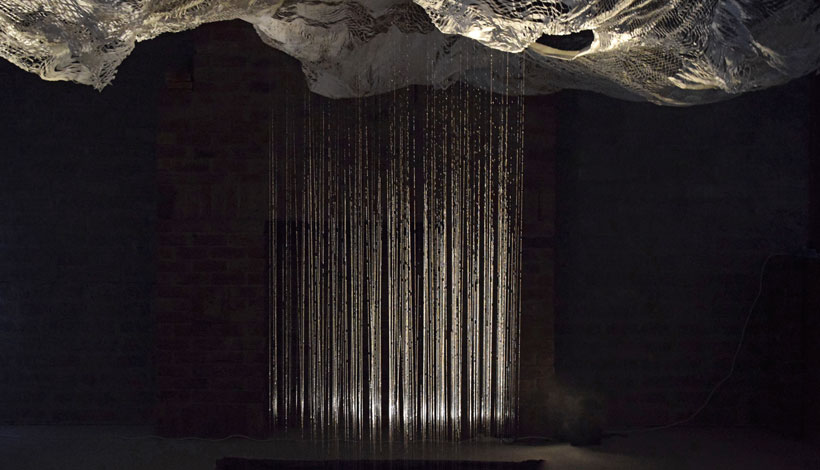
Adam’s June sale features an intriguing work by Jack B Yeats. In a Dublin Waxworks was painted in 1912 in the artist’s earlier, illustrative style. At first glance, it appears to show a rather plain-looking woman lying in a coffin with a dagger sticking from her midriff. A young man stands by the coffin looking down with a sorrowful expression. Those of a literary bent may judge it a scene from the conclusion of Romeo and Juliet – albeit featuring a Juliet whose allure is not evident. It was a play the artist knew well from his regular theatre-going and a scene he was to paint more than once. However, the heavily rouged figure in the coffin seems no beauty, and the legs are puzzlingly bare. Closer inspection of a plaque on the side of the coffin tells us that it is actually Marcus Anthony – another victim of a knife wound. What appears to be the top of a woman’s dress is someone’s idea of Ancient Roman menswear. Aside from its macabre theme, the painting has a number of interesting aspects to it. Yeats visited the old Dublin Waxworks in Henry Street in 1905 and made a sketch of this rather unconvincing looking Roman hero. The painting emerged in 1912, two years before the waxworks was burnt down. So, the painting has a historical significance as a glimpse of a lost Dublin institution. It came from the collection of the late Garech Browne and hung at his home at Luggala for many years. It was also shown at the ‘Yeats in the Municipal Gallery’ exhibition in 1959. This most unusual and historical work is guiding at €60,000 to €80,000.


Marcel Vidal finds that a thread of instability runs through Freida Breen’s sculptural practice

Julian Walton and William Fraher explore the magnificent Curraghmore House in County Waterford, where, three hundred years ago, the union of two families produced the most powerful dynasty in late Georgian Ireland

Julian Campbell outlines the expressive, emblematic ways in which artists have been drawn to the wild and rugged Atlantic landscape